EFSP co-editor Ivo Blom will give the presentation 'Her/Hair Affairs', on conventions, personal vocabularies, and gestures in silent cinema related to hair. It involves such films as Malombra (1917) with Lyda Borelli, La storia di una donna (1920) with Pina Menichelli, Shoes (1916) by Lois Weber, and Grezy/Daydreams (1915) by Yevgeni Bauer. Other speakers will be e.g. Rachel Morley, Laurent Guido, Kristina Köhler, Marketa Uhrilova, Asli Özgen, Dominique Nasta, Vito Adriaensens, and Uffreduzzi herself.
Here at EFSP, Ivo gives you a preview of his presentation.

German postcard by GG, no. 2428/11. Henny Porten: ethereal girl, long hair and horse.
Sturdy and blond Henny Porten (1890-1960) was one of Germany's most essential and famous film actresses of silent cinema. She became the quintessence of German womanhood, ladylike yet kindhearted and a not a little petit bourgeois. She was also the producer of many of her own films.

German postcard by Rotophot in the Film-Sterne series, no. 64/3. Photo: Messter-Film, no. 37. Henny Porten with hair pinned up.
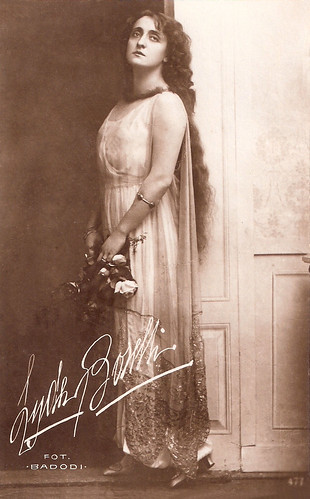
Italian postcard, no. 471. Photo: Attilio Badodi. Lyda Borelli: what a profile, what an exquisite dress (Paul Poiret?), what long hair!
Lyda Borelli (1887-1959) was already an acclaimed stage actress before she became the first diva of Italian silent cinema. The fascinating film star caused a craze among female fans called 'Borellismo'.
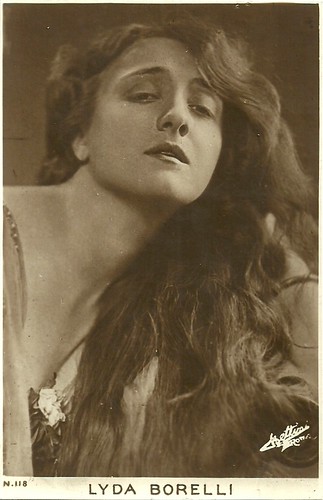
Italian postcard by Photo Ed. Soc. Anon. It. Bettini, Roma, no. 118. Photo: Riccardo Bettini. Again, Lyda Borelli and long hair.
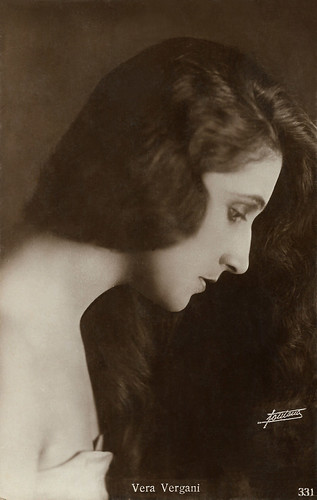
Italian postcard by Ed. A. Traldi, Milano, no. 331. Photo: Fontana. Vera Vergani, long hair.
Vera Vergani (1894–1989) was an Italian stage and film actress. She not only performed in the first stagings of Luigi Pirandello’s plays but in 1916-1921 she also knew a career as an actress in Italian silent cinema.

Italian postcard by Photo Ed. Soc. Anon. It. Bettini, Roma, no. 117. Photo: Riccardo Bettini. Soava Gallone, long hair (Was it one of Bettini's fixations?)
Polish actress Soava Gallone (1880-1957) was one of the divas of Italian silent cinema.

Spanish cromo (collectors card) by Chocolate Imperiale, no. 6 of 6. Photo: Sabaudo Film / distr. J. Verdaguer. Diana Karenne in Lea (Diana Karenne, Salvatore Aversano, 1916). Diana Karenne, long hair.
Polish actress Diana Karenne (1888-1940) was one of the divas of Italian silent cinema. Between 1916 and 1920, Karenne fascinated European audiences with her eccentric dresses and make-up, and with her primadonna behaviour.

German postcard by Ross Verlag, no. 86/4. Photo: National Film. Biblical long hair: Jacqueline Logan in The King of Kings (Cecil B. DeMille, 1927). Caption: Mary Magdalene dries Jesus' feet.
Jacqueline Logan (1901-1983) was an American actress on the silent screen. Her most famous part is that of Mary Magdalene in The King of Kings (1927) by Cecil B. DeMille.

French postcard by Editions Cinémagazine, no. 327. Mary Pickford's long hair.
Mary Pickford (1892-1972) was a legendary silent film actress and was known as 'America’s sweetheart.' She was a founder of United Artists and helped establish the Academy.

British postcard in the 'Pictures' Portrait Gallery, London. The girly look, Goldilocks: Mary Miles Minter.
Mary Miles Minter (1902-1984) was an American silent screen actress who grew into a rival of Mary Pickford. In 1919 she made her most famous film, Anne of Green Gables (presumably a lost film), with director William Desmond Taylor. The film became a huge success, as a result of which Taylor started to promote the actress.
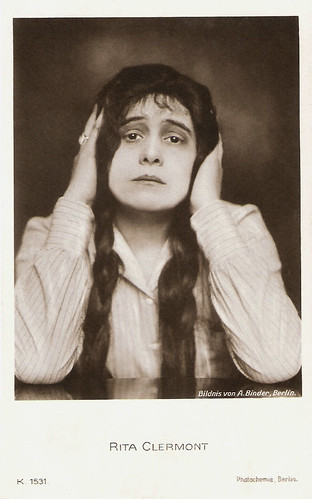
German postcard by Photochemie, Berlin, no. K. 1531. Photo: Alex Binder, Berlin. Backfisch and braids: Rita Clermont.
Rita Clermont (1894-1969) was a German film actress of the silent era. She received her first contract from Messter Film. Franz Hofer directed her in a series of similar cheerful stories, in which she mimed flappers, 'backfisches' and cheerful, rebellious girls. Until 1924, she appeared in 60 silent films.

German postcard by Verlag Hans Dursthoff, Berlin, no. 997. Photo: Karl Schenker, Berlin / Oliver Film. Backfisch and locks: Dorrit Weixler.
German silent film actress Dorrit Weixler (1892-1916) anticipated such better-known comedy stars of the German cinema as Ossi Oswalda and Anny Ondra. Her popular roles were the temperamental teenager or the tomboy in a sailor suit who is tamed by the 'right man'. The career of the bright and light comedienne was like a candle burning on both sides.
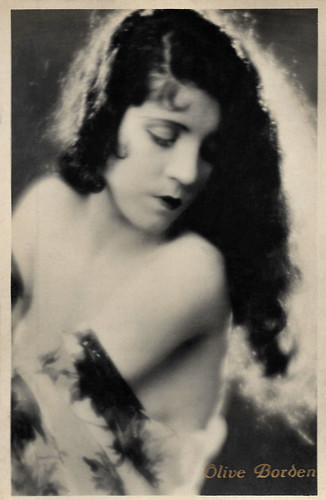
Italian postcard by G.B. Falci Editore, Milano, no. 614. Olive Borden, from long black curly hair to a bob cut.
Stunning Olive Borden (1906-1947) was considered one of the most beautiful actresses of the silent era. At 15, she started as a Mack Sennett bathing beauty and reached the peak of her career in 1926 when she made 11 films for Fox Studios and was earning $1,500 a week. She was nicknamed "the Joy Girl", after playing the lead in the 1927 film of that same title, but soon her career waned.

German postcard by Ross Verlag, Berlin, no. 1665/3, 1927-1928. Photo: FaNaMet (or ParUfaMet). Pola Negri bob cut.
Polish film actress Pola Negri (1897-1987) achieved notoriety as a femme fatale in German and American silent films between the 1910s and 1930s. In the late 1910s and the 1920s, she achieved notoriety as a femme fatale in silent films in Poland, Berlin, and Hollywood. Negri was an overnight sensation in Ernst Lubitsch's Madame du Barry/Passion (1919). Her vamp roles were so popular that she was a direct rival of Theda Bara, and lived in a Hollywood palace, modelled after the White House.

Austrian postcard by Iris-Verlag, no. 566/2. Photo: First-National-Film. Publicity still for The Desert Flower (Irving Cummings, 1925). Flapper & bob cut: Colleen Moore.
American actress Colleen Moore (1899-1988) was a star of the silent screen who appeared in about 100 films beginning in 1917. During the 1920s, she put her stamp on American social history, creating in dozens of films the image of the wide-eyed, insouciant flapper with her bobbed hair and short skirts.

Italian postcard for Malombra (Carmine Gallone 1917), adapted from the novel by Antonio Fogazzaro, and starring Lyda Borelli and Amleto Novelli. IPA CT Duplex. Film Cines. Caption: ...at that moment she felt her waist held by the powerful hands of Silla, who lifted her back up the stairs. Hairs signals. Letting her hair down: Lyda Borelli in Malombra.
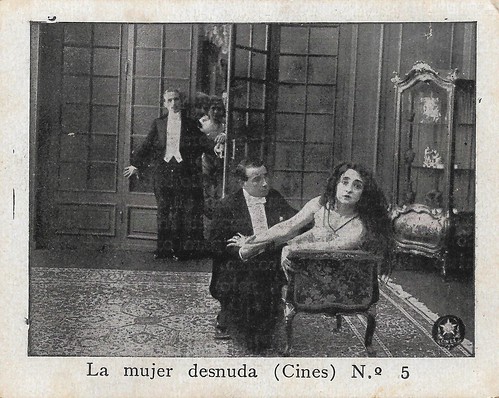
Spanish minicard (collectors card) by Reclam Films, Mallorca, no. 5 of 6 cards. Photo: Cines. Lyda Borelli in La donna nuda (Carmine Gallone, 1914). Letting her hair down: Borelli in La donna nuda.

Spanish postcard by Amattler Marca Luna chocolate, series 7, no. 19. Lyda Borelli as Queen Maria Teresa in Carnevalesca (Amleto Palermi, 1918). Queen Maria Teresa, flees the castle after having unjustly killed her husband. Letting her hair down: Lyda Borelli in Carnevalesca (1918).

Spanish collectors card by Chocolate Imperiale, no. 6 of 6. Photo: Rinascimento Film. Pina Menichelli in Il giardino incantato/The Stronger Sex (Eugenio Perego, 1918). The film was originally entitled 'Il giardino della voluttà', a title which the Spanish cards on the film kept, but which became forbidden by the Italian censor. Pina Menichelli & touching hair.
Fascinating and enigmatic Pina Menichelli (1890-1984) was the most bizarre Italian diva of the silent era. With her contorted postures and disdainful expression, she impersonated the striking femme fatale.
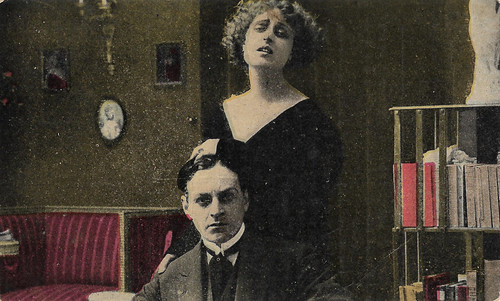
Spanish collectors card by Chocolate Imperiale, no. 5 of 6. Photo: Rinascimento Film. Pina Menichelli and Luigi Serventi in Il giardino incantato/The Stronger Sex (Eugenio Perego, 1918). Pina Menichelli & touching hair.
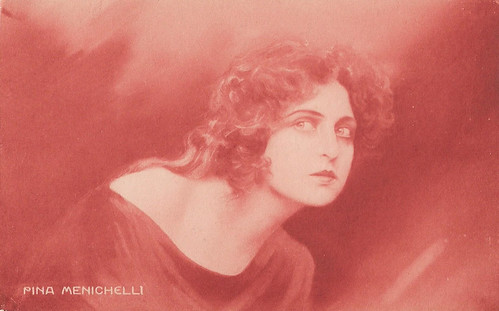
Italian postcard. Pina Menichelli with her hair unbound (danger ahead!).

Spanish collectors card by Chocolate Amattler, Marca Luna, series 4, no. 17. Photo: Caesar Film. Francesca Bertini in Malìa (Alfredo De Antoni, 1917). The Spanish title for this film was Liliana. The portrait photos in this series were by Pinto, Rome. Francesca Bertini, unwinded long hair, after being raped and tattooed against her will, in Malía (a ripoff of The Cheat).
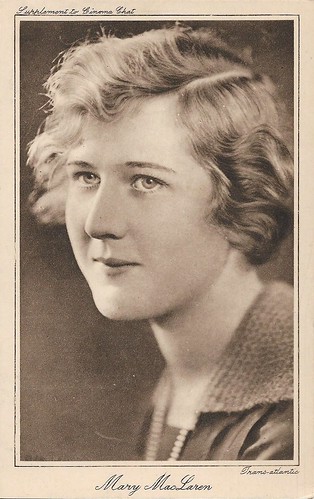
British postcard by Cinema Chat. Photo: Transatlantic (Universal's European distribution branch). Pinning up her hair: Mary MacLaren in Shoes (1918). The card is not from Shoes, sadly.
Mary MacLaren (1896–1985) was an American film actress. Mary was launched in 1916 in the lead of Shoes which tells about the desperate measures of a girl, selling her body for shoes. A successful film career, including a role as Anne of Austria, Queen of France, in Fred Niblo's The Three Musketeers (1921), starring Douglas Fairbanks.

Italian postcard by Ed. A. Traldi, Milano, no. 663. Elena Sangro as the Empress Poppea in the epic film Quo vadis? (Gabriellino D'Annunzio, Georg Jacoby, 1924/1925), a production of UCI (Unione Cinematografica Italiana). Wigs: Elena Sangro in Quo vadis? (1924).
Elena Sangro (1896-1969) was one of the main actresses of the Italian cinema of the 1920s. In spite of the general film crisis then, she made one film after another. She was also one of the first female directors and she had a famous affair with the 64-year-old poet Gabriele D'Annunzio.
Notes
For Grezy/Daydreams (1915) see Silents Please and this gif.
For La moglie di Claudio with Menichelli, see Silents Please and this gif.
For the scene in Malombra with the metamorphosis, see YouTube, from 19:17 to 21:22.
See Shoes on the Eye Player. From 37:10: Mary binds her hair when she is going to prostitute herself. Her look in the mirror tells all: she knows what's coming. Till 37:55.
No comments:
Post a Comment